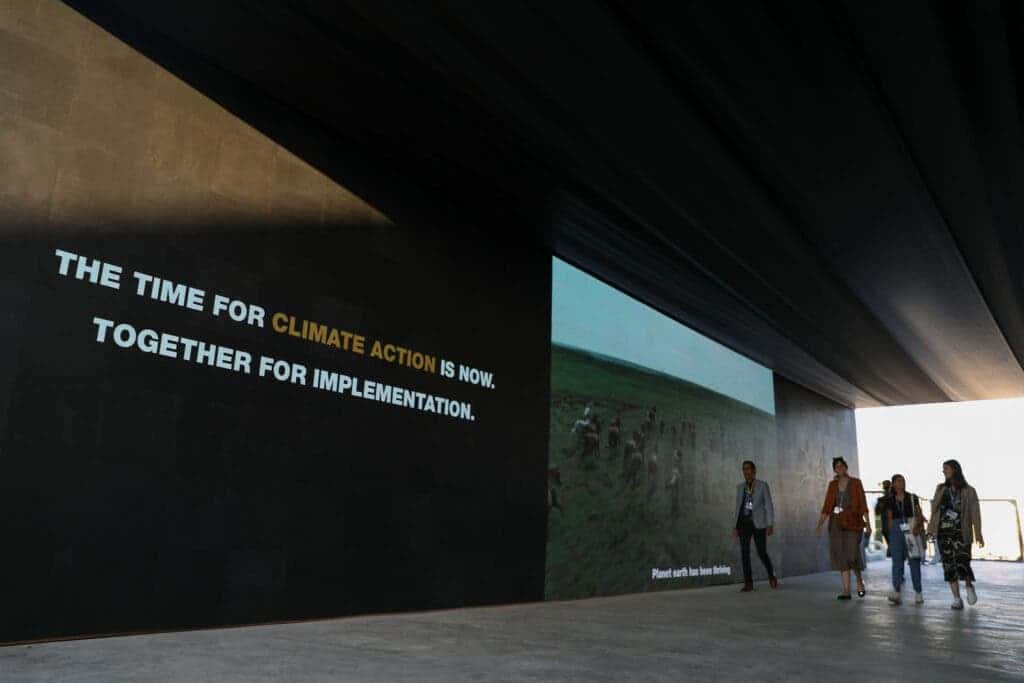Almost 200 countries gathered for the UN climate change conference in Egypt are arguing over whether rich countries should pay compensation to vulnerable states affected by climate change disasters. The summit comes after a year packed with such disasters, from floods in Pakistan to drought in China, Africa, and the United States.

In the UN climate talks, the phrase “loss and damage” refers to costs already being incurred by countries from climate-fueled weather impacts, such as rising sea levels. Climate funding has so far largely focused on reducing carbon dioxide emissions in an effort to tackle climate change, but not much attention has been placed on compensation.
This is where loss and damage come in, compensating costs that vulnerable countries can’t avoid. However, there’s no agreement on what should count as loss and damage in climate disasters, which can go from damaged infrastructure to harder-to-value natural ecosystems. These issues are extremely contentious between counties at COP27.
A report last June by a group of 55 vulnerable countries found that their combined climate-related economic losses over the last two decades totaled about $525 billion, or about 20% of their collective GDP. Tackling these losses forces countries to take a lot of debt, which they can’t finish paying before a new climate event hits them again.
Show me the money
For years, vulnerable countries and environmental organizations have been making the case that rich countries bear the brunt of responsibility for the climate crisis. It’s their historical emissions that put us here, so they should now pay. The US and the EU have largely resisted the argument and blocked proposals, worried over the spiraling liabilities.
The most recent example was at last year’s climate summit, COP26, when the US and the EU blocked a proposal to establish a loss and damage fund, instead committing themselves to a “dialogue” without actually pledging clear targets. They’ve shown recently more willingness to discuss compensation, but are still wary of the issue.
Denmark, Scotland and the Belgian region of Wallonia are the only governments so far that have made small funding commitments to loss and damage. Now, at COP27 the issue has been included in the official agenda, something celebrated by many countries, from island states such as the Maldives to China, the biggest CO2 emitter.
COP27 President Sameh Shoukry told the opening plenary that including the issue on the COP’s agenda shows a “sense of solidarity for the victims of climate change.” He added that the decision created “an institutionally stable space” for discussion of funding for loss and damage, and that the objective is to make a decision by 2024.
Countries have made different proposals on how such a fund would look like. The Alliance of Small Island States has suggested creating an UN-hosted “response fund” to gather cash from different sources while the EU has suggested using existing international funds to tackle loss and damage, instead of creating a new one.
Lack of commitment
Vulnerable countries are right to be mistrustful of rich countries’ pledges. Back in 2009, rich countries agreed to provide $100 billion a year to developing nations by the end of 2020. However, by the end of that year, the total had reached only $83 billion. Most of this finance (80%) came from public efforts and the rest from the private sector.
A recent analysis by Carbon Brief showed that the US should be paying almost $40 billion to meet that $100 billion target – $32 billion more than the estimated $8 billion it gave in 2020. Other countries also lagging behind are Australia, Canada, and the UK, all of which made smaller contributions to the target than their share of historical emissions.
And not only is that target not being met, but developing countries are also arguing that it’s actually too low. At last year’s climate summit in the UK, the G77+ China alliance of developing countries asked rich countries to allocate at least $1.3 trillion by 2030. They argued this should be divided equally between reducing emissions and adapting to climate change.
At the moment, most of the public climate funding goes to reducing emissions and is given in the form of loans rather than direct grants to countries. This can increase the debt burden of poor nations, Nafkote Dabi, Oxfam International Climate Policy said in a statement. Rich countries are “crippling the ability” of poor ones to cope with the next climate shock, he said.
Mia Mottley, Barbados’s prime minister, a country severely hit by extreme weather events, was one of the leading speakers in Egypt this week, and in a speech applauded by many delegates highlighted the need for more climate funding. Loss and damage are critical, she said, and it has to involve the public sector and also fossil fuel companies.
“The world looks too much like it did when it was part of an imperialist empire. The global north borrows with interest rates at between 1 and 4 percent and the global south at about 14 percent interest rates,” Mottley said. “There is no way developing countries can fight this climate battle without further access to concessional funding.”
Read more stories from our on-the-ground reporting at COP27 in Egypt.


